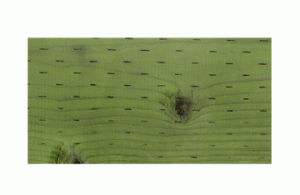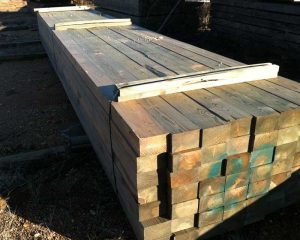Incising
My former wife (mother of my two youngest children – Allison and Brent), was by training an RDH (Registered Dental Hygienist). In order to keep her registration current, she had to obtain CEUs (Continuing Education Credits). One way to generate CEUs was to attend the annual state dental convention.
One year I went along with her and as we perused the trade show floor, the assumption was somehow made of me being a dentist – so I received lots of attention. Also tons of free stuff – I don’t think I needed to purchase a tooth brush, tooth paste or dental floss for the next decade!
Other than my annual visits to the dentist, about the only thing I remotely knew in regards to teeth were the incisors are the front four teeth on the top and bottom.
With my tremendous knowledge of incisors – I was able to easily translate to incising of lumber.
For those in the east and south – you may have never seen pressure preservative treated lumber which has been incised. Most treated lumber in those regions is Southern Yellow Pine – which is highly treatable (think of it as being a chemical sponge).
Travel west and north, the lumber species of choice for pressure treating is grade stamped as Hem-Fir. Hem-Fir is not a species unto itself, it is a lumber species “group” which includes California Red Fir, Grand Fir, Noble Fir, Pacific Silver Fir, Western Hemlock and White Fir.
 Difficult-to-treat (refractory) lumber species, such as Hem-Fir, must be incised prior to preservative treatment to meet minimum penetration requirements for preservative-treated wood. Incising is a pretreatment process in which small incisions or slits are punched into the wood. To me, the resultant product looks as though the lumber has been walked on by someone wearing golf shoes!
Difficult-to-treat (refractory) lumber species, such as Hem-Fir, must be incised prior to preservative treatment to meet minimum penetration requirements for preservative-treated wood. Incising is a pretreatment process in which small incisions or slits are punched into the wood. To me, the resultant product looks as though the lumber has been walked on by someone wearing golf shoes!
Incising increases preservative retention and penetration during the treating process by increasing the amount of exposed, easily penetrated end-grain and by decreasing the side-grain surface area. While incising has been used since the 19th century, the process appears to have developed casually with little consideration given to optimizing the process to maximize preservative treatment and minimize strength loss. While AWPA (American Wood Preservers Association) standards require incising, they do not define or recommend what type, how deep, or how many incisions are required. Generally, it appears the more effective an incising pattern is in achieving preservative penetration, the more it reduces strength.
AF&PA’s National Design Specification® (NDS®) for Wood Construction includes provisions for the downward adjustment of lumber strength characteristics for incised lumber by use of an Incising Factor known as Ci. Referenced design values are multiplied by Ci when dimension lumber is incised parallel to grain a maximum depth of 0.4”, a maximum length of 3/8”, and a density of incisions up to 1100 per square foot.
E values are to be multiplied by 0.95, while other values (with the exception of compression perpendicular to the grain of the wood) are multiplied by 0.80.
Sound engineering design of incised lumber (which includes pole building columns) take into account these strength reductions.
If you see Hem-fir and it has all these little cuts – don’t panic. It just means it’s been incised for adequate infiltration of chemical treatment. This ensures preserving a longer life of whatever you are building, be it a deck, garage or even a new pole building house.
 Or maybe more like Scrabble – where my 19 year old daughter always seems to either draw the right letters, or make otherwise incomprehensible words (to her Dad anyway) out of a total jumble.
Or maybe more like Scrabble – where my 19 year old daughter always seems to either draw the right letters, or make otherwise incomprehensible words (to her Dad anyway) out of a total jumble.





